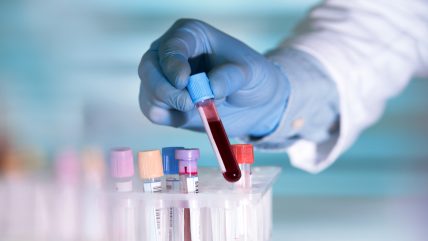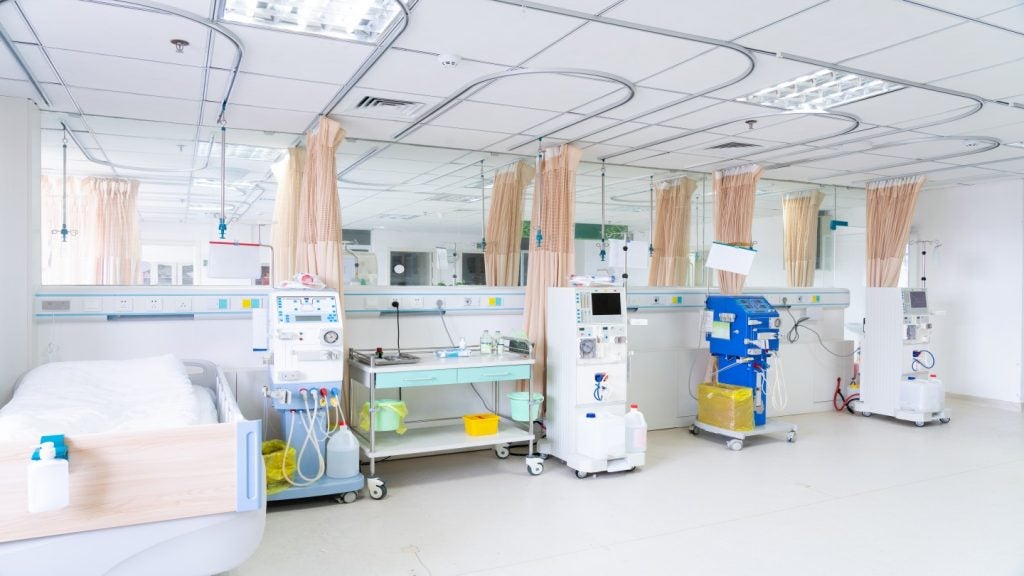
Maintaining a constant supply of blood is vital for the day-to-day functioning of health systems worldwide, but the acquisition and ability to store and preserve blood to ensure it is available when needed presents a challenge that can have a catastrophic impact on patients.
In October 2022, the UK’s National Health Service (NHS) blood and transplant department issued its first-ever Amber Alert, asking hospitals to enact blood stock protection measures that led to many non-urgent elective surgeries being put on hold to ensure stocks were reserved for those in critical need.
On 11 September 2023, the American Red Cross declared a national blood shortage citing critically low blood supply levels that had sharply dropped nearly 25% since early August 2023. The charity put this shortage down to several socio-economic factors ranging from a busy national travel season to natural disasters. But blood supplies and the rate at which people donate is a delicate balance. A lack of donors in one month, or a surge of donors in another can have a knock-on effect that can result in damaging and potentially deadly droughts later.
Donor populations can also be changeable and unpredictable, as the NHS’s blood and transport team discovered last year when it reported that despite 325,000 people registering to donate blood in 2022, only around 91,000 ever attended an appointment. Additionally, the organisation cited a lack of uptake among the rarer blood groups, with 29,000 blood type self-testing kits sent out to registered O-negative prospective donors in late 2022, and only two in five going on to donate.
Gwaed yn y galw / Blood in demand
One of the major challenges when it comes to maintaining adequate blood stocks is the shelf life of blood itself, as well as its component elements, plasma, and platelets. The Red Cross elaborates that whole blood can be refrigerated and stored for approximately 35 days, depending on what coagulant is used. This means that whilst blood is consistently collected it must be consistently used and transported to where it is needed quickly and efficiently to avoid wasting already in-demand stock.
This issue is particularly pronounced in rural communities, as the storage and transport of blood and its constituent components is dependent on local medical, and non-medical infrastructure. Blood storage and transportation require refrigeration and real estate to prevent the blood from being wasted. It also requires access by road, rail, and air.
How well do you really know your competitors?
Access the most comprehensive Company Profiles on the market, powered by GlobalData. Save hours of research. Gain competitive edge.

Thank you!
Your download email will arrive shortly
Not ready to buy yet? Download a free sample
We are confident about the unique quality of our Company Profiles. However, we want you to make the most beneficial decision for your business, so we offer a free sample that you can download by submitting the below form
By GlobalDataIn Wales, these issues come into consideration more than they might in England. Lee Wong from the Welsh Blood Service is responsible for ensuring that the nation’s many clinics surgeries and hospitals get deliveries when and if they need them. Joined by the head of donor engagement Andrew Harris, the pair detailed how blood supply issues become much more pronounced in rural communities.
“It’s about making sure that blood is used appropriately,” said Wong. “The best transfusion is no transfusion. Obviously, if your patient needs blood, you give it, but you need to make sure that it’s only given when required. It sounds like a no-brainer, but, there are quite a few medics who will give a peaky patient one or two units just to send them on their way.”
Harris detailed how, according to the Welsh Blood Service only approximately 10% of its stocks are used in the case of an emergency, while 25% is used in surgery. A further 5% is used in obstetric procedures, but the vast majority are those who come in for frequent transfusions due to a blood disorder or conditions such as sickle cell anaemia and Myelodysplastic syndrome. For these patients, the consistent flow of blood is vital for their day-to-day health.
The pair also elaborated on how the orderly timing of donation drives is key to maintaining that consistency. In the UK donors are only able to make donations once every 12 to 16 weeks, depending on patients. However, blood is only able to be stored for approximately 35 days. This means too many people donating at one time can mean too many donors unable to donate another time. As a result, spacing out donations is key.
Harris added: “The difficulty is, if everyone comes in now and they can’t donate for 120 days, that gap of 90 days makes it very, very difficult because then all your willing and able donors have given during that one window, so you have the difficulty that they stock can expire, and we aren’t able to make the best of someone’s donation.
“So how we control that is we maintain a steady supply of appointment capacity so we can maintain a steady supply. Historically we had a lot of walk-in appointments, but now being able to control bookings gives us an idea, of who is coming. By knowing who is coming we know what kinds of blood types to expect and then we know who to invite.”
Software as a solution
Several medical device companies have firmly established themselves in the market for blood banking and transport as a more niche subsection of the wider blood management device market. One example is the US-based company Velico, which launched a Phase I safety study examining its system for spray-drying plasma in July 2023. The first-in-human clinical trial is taking place at three sites across the US backed by the US Department of Health and Human Services.
In April 2023, the NHS launched a project alongside Velico testing dried plasma aimed for use on soldiers operating in war zones, in a project costing £4.9m.
Medical device manufacturer Terumo is also working on solutions that may be more appropriate to challenges faced by rural healthcare services such as the Welsh Blood Service. The company revealed it is working on software systems that automatically track, display, and organise the chain of events involved in storing blood.
Anna Razatos, senior manager of global scientific marketing at Terumo, said: “It’s extremely important for people to donate blood regularly. You never know when you are going to have the next car accident or mass casualty event and it is the blood that is already sitting on the shelf that’s going to save those lives.”
Razatos detailed how blood storage techniques vastly differ by blood type and component, with platelets only having a shelf life of approximately seven days, forcing blood centres to constantly fight to maintain razor-thin supplies. In August 2023, Terumo was able to swing US Food and Drug Administration clearance for its Reveos system, which is designed to process whole blood into platelets.
Razatos also explained how the company is now putting a lot of focus on software solutions intended to remedy the problems of timing and donor management. Describing the company’s upcoming Lumia suite of blood management software, she detailed how interconnected devices and systems could keep blood collection regular.
“A lot of our research right now is in software solutions,” Razatmos said. “It’s okay to have one device that you hook up and collect from one donor, but we have software that allows a centre to manage its whole fleet of vehicles for the purpose of adjusting what they are able to collect to meet its needs You want to collect but you don’t want to over-collect so we have software solutions that have bi-directional communication with our devices so a blood centre can control the whole process from a laptop.
“We are building software that is going to be called Lumia when it is launched, and it will be able to communicate with multiple devices as well as with blood centres and blood management systems so they can really see what is going in and out without it being over-collected.”
Given where the industry is expanding it is likely that the future of blood storage and management lies less so in the preservation or extension of the shelf life of blood. Instead, advances seem poised to focus on ensuring that blood donations are timed as effectively as possible, as well as tracking where blood stocks are at any given time.







